6 Aug 2019
Interview
ROSALÍA BANET: CANDY DAYS AND CONFUSED EATING IN CONTEMPORARY SOCIETY
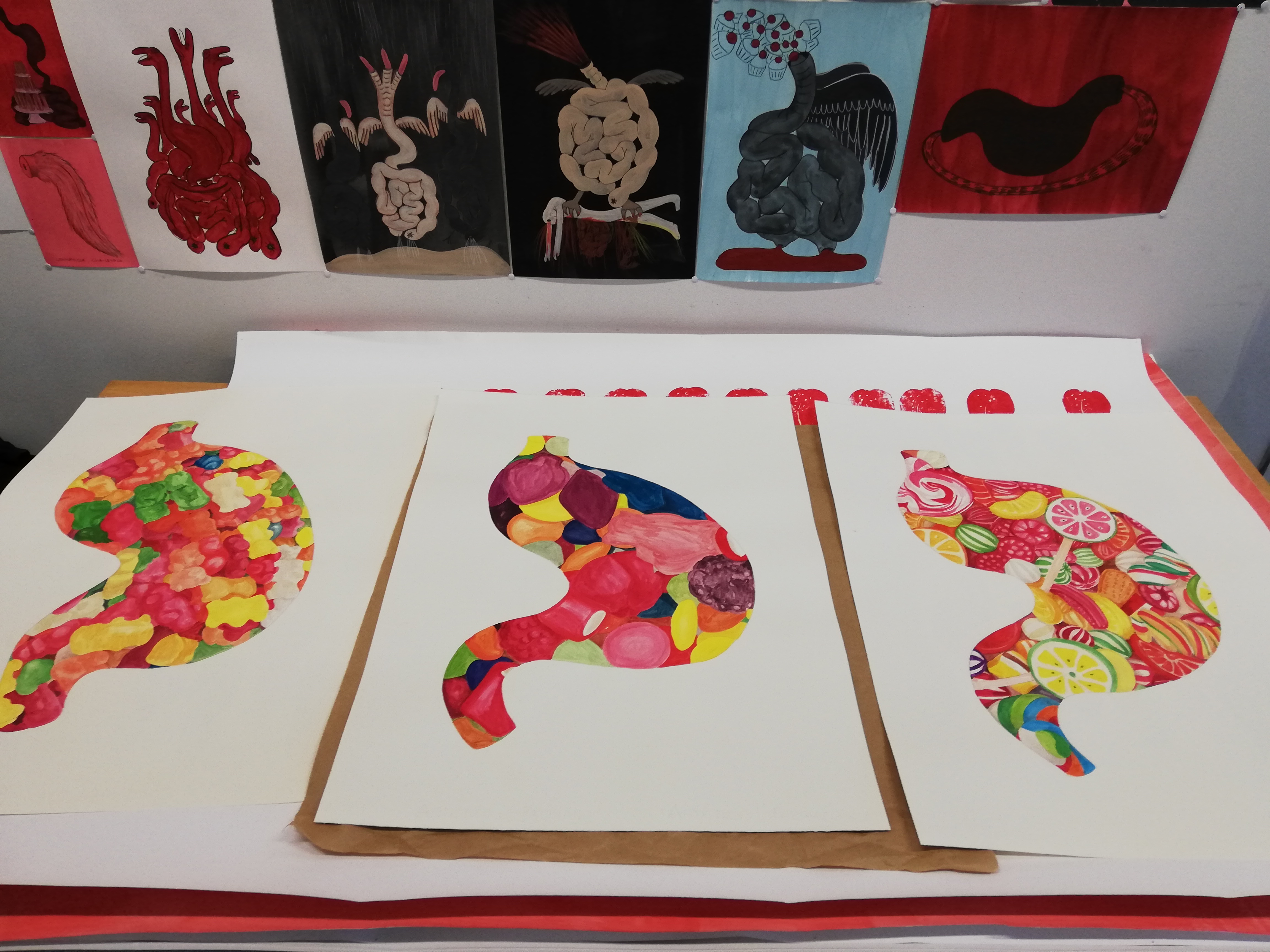
Candy Day, 2019.
Rosalía Banet is a Spanish visual artist, who is working in one of HIAP’s Cable Factory studios until the end of August. Rosalía works mainly in painting, drawing, and video. However, she has recently been experimenting with printmaking as well. Her recent work focuses on representing the excesses in society through depicting the human body, especially the digestive system.
Rosalía began her recent investigation and reflection by painting a series of small, illustrative and colourful paintings, which show not only the human body and its digestive system, but also the cheerful and colourful aspect of the complex issue that is food in contemporary society. The paintings use many bold symbols to illustrate the relationship humans have with food. One of these symbols is a black stomach, as inspired by Japanese culture.
In Japanese culture, the stomach is where the soul lives. When a person is very bad, the ugliness of the soul spreads to the stomach, making it black. On the contrary, when a person misbehaves but regrets it, the stomach is still clean and pure.
In her recent work, Rosalía has combined the symbol of the black stomach with the idea of a “candy day”, which some children have in Finland and in other countries. This idea originally marketed by dentists in order to not spoil children’s teeth by consuming sweets every day has, for some people, resulted in a day filled with sweets as a reward for being good and behaving during the rest of the week. The habit of a candy day is exactly what is wrong with contemporary society in general; sweets are bad for one’s health, yet they are being used as a reward.
Such mixed messages can be found elsewhere, too. Food advertising is notoriously confused; food is marketed to consumers as healthy, ecological, vegan, green, as well as tasty, creamy, and easy to prepare. No wonder eating is increasingly complicated.
Rosalía’s current work includes paintings, drawings and also two video works still in production. The work focuses on opposites, ugly insides painted in happy pinks, comfort eating and confused consumer messages.
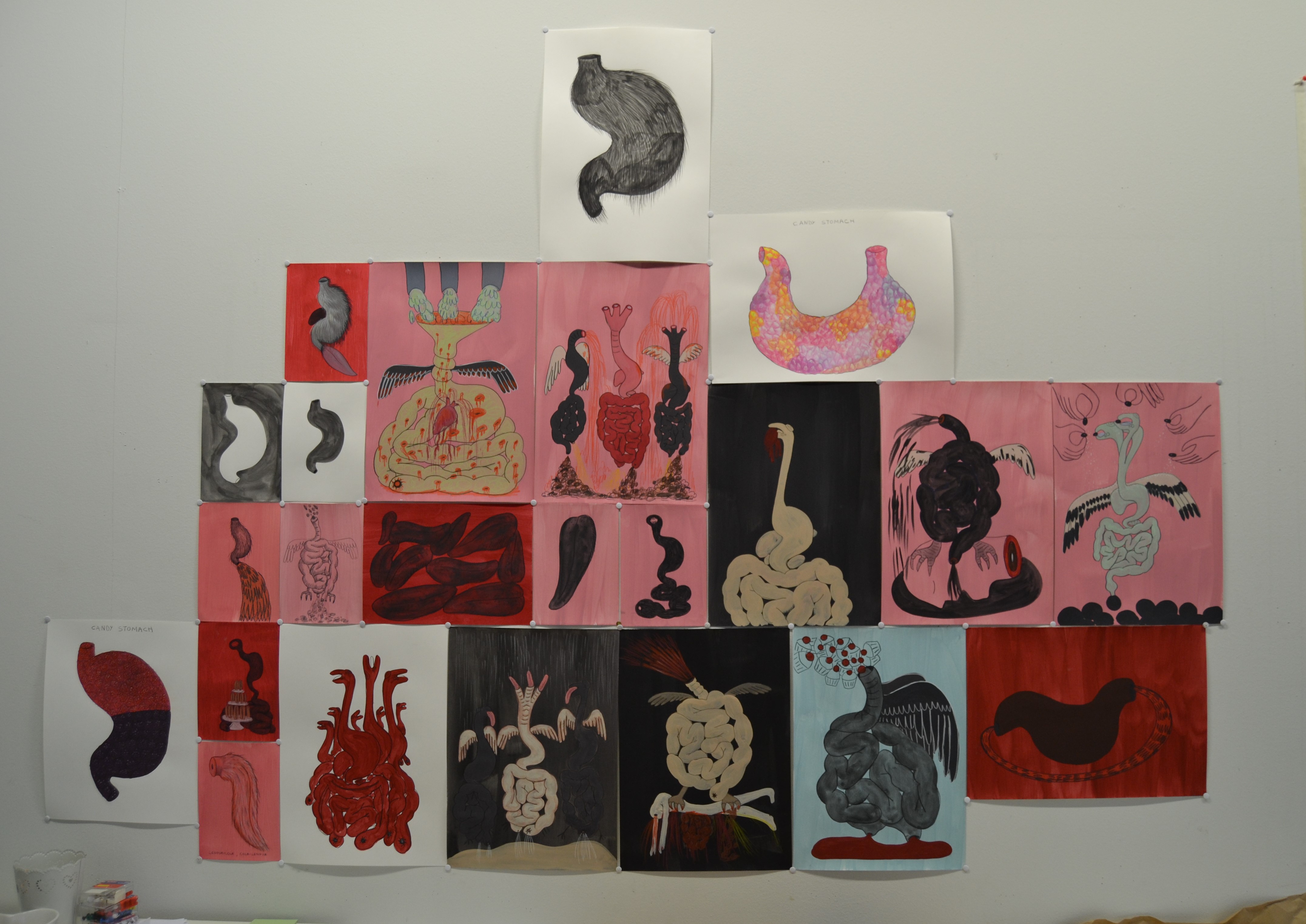
Bocetos, 2019.
AA: In your work, food is considered indulgent and forbidden, and bodies are flawed. Is this a dystopian view of what we could become or a comment on the current societal state?
RB: In a way, it’s both.
First, my work could be considered a criticism of the food system and, at the same time, of current society and human behaviour. In fact, I use food and eating to reflect on nourishment nowadays, but also to try to understand the system we inhabit and the place of humankind in it.
And because I point out some of the consequences of our eating style and the massive scale of food production and consumption, it’s also a portrait of what I think it could become, and as you can see, it’s everything but desirable. In fact, I depict the food system as a hungry monster, who is devouring us. In these representations the food system is a mess and humans are confused and lost. But I don’t want to give any lesson or say to anybody what to eat or not, that’s not my point. I’m not a doctor or a teacher. As I said, I just want to make people reflect on the food system and society and the role we have on them both.
On the other hand, the body in pieces and its diseases are a usual part of my imagery. I use them as symbols, in order to represent a dehumanized society, and to show the fragile position of human beings in this big supermarket that, for me, the world has become. A world market where humans are not consumers anymore, but products of the food system.
AA: Food has been the subject of paintings since the beginning of time, especially in the genre of still life. How did you start using such a traditional theme to describe excessive and compulsive behaviour?
RB: I’ve found food and eating the best place to reflect on society and human being. Probably because eating is a basic action for human beings, as necessary for our survival as breathing. But, while breathing is an automatic act, eating is more complex act and one requiring many choices. Lévi-Strauss used to say something like: food has to be good to eat but it also has to be good to think. It means that while food feeds our stomachs and our bodies, also it feeds our feelings and thoughts. That’s the reason why we don’t eat just what is edible. Food has to suit us culturally, socially and individually.
It could be said that we eat not just with the digestive system, but with our eyes, our nose, our ears, our brain, and every single part of us. Eating is probably one of the deepest acts. In fact, what we eat goes directly inside of us and becomes a part of us. As Brillat Savarin said: we are, what we eat (The Physiology of Taste, 1825).
And the choices we make regarding food have very important consequences for us and for our environment. Eating has become more than a nutritional fact, it’s a political, economic, social and environmental issue.
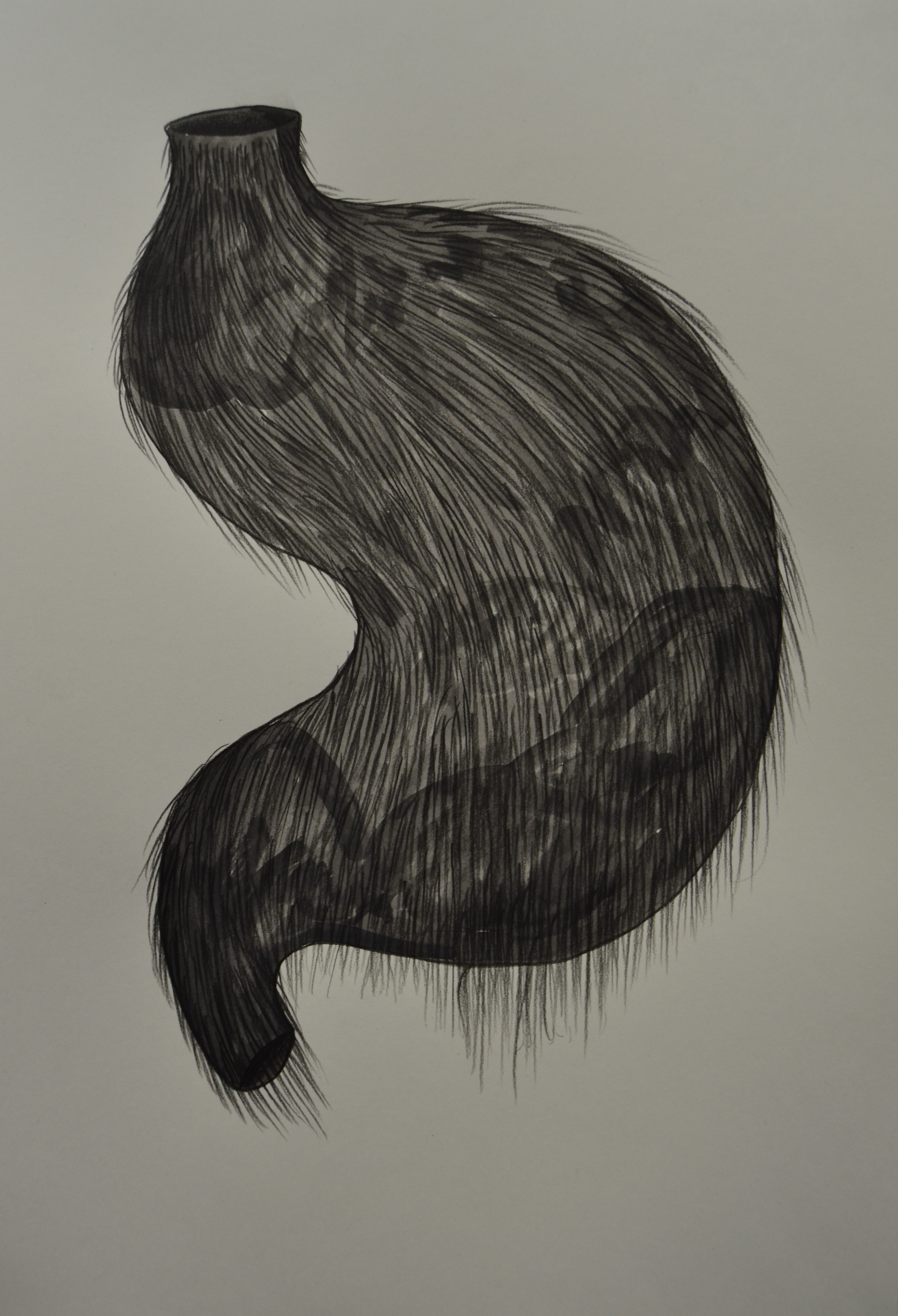
Animal Stomach, 2019.
AA: Do you consider in your drawings the association in art history between food and feminism? Women with food have been a recurring theme in the history of art.
RB: Yes, there’s a relationship between my works and feminism. Indeed, when I first started to approach the food issue, about twenty years ago, my works were focused on identity and gender. At that time, I approached the kitchen as a place reserved exclusively for women and considered a secondary space for centuries. A place that became part of the mainstream and achieved its highest consideration only when men entered it, during the era of the big star male chefs.
Maybe, now, I’m focusing my work on another main point. But feminism is still there. My whole art project is a process of adding concepts. I’m constantly adding new subjects and rethinking old ideas. It means that my recent works are always connected with my previous works and that’s the way my art project grows.
AA: Tell us a bit about The Empire of the Stomach, the work you have produced while at HIAP.
RB: The Empire of the stomach emerges from my latest work, Gluttony, and seeks to highlight the importance of food choices and their consequences on a personal, social and environmental level. It constitutes an analysis and questioning of the current food system and an invitation to reflect on food and everything that surrounds it.
Within the project, my work follows two different lines: one of them more poetic and personal, it is composed of a series of works on paper such as Black Stomach, Animal Stomach and The Empire of the Stomach. The series is a kind of visual reflection, done in a very free style, using acrylics and coloured pencils, and workings in diverse sizes.
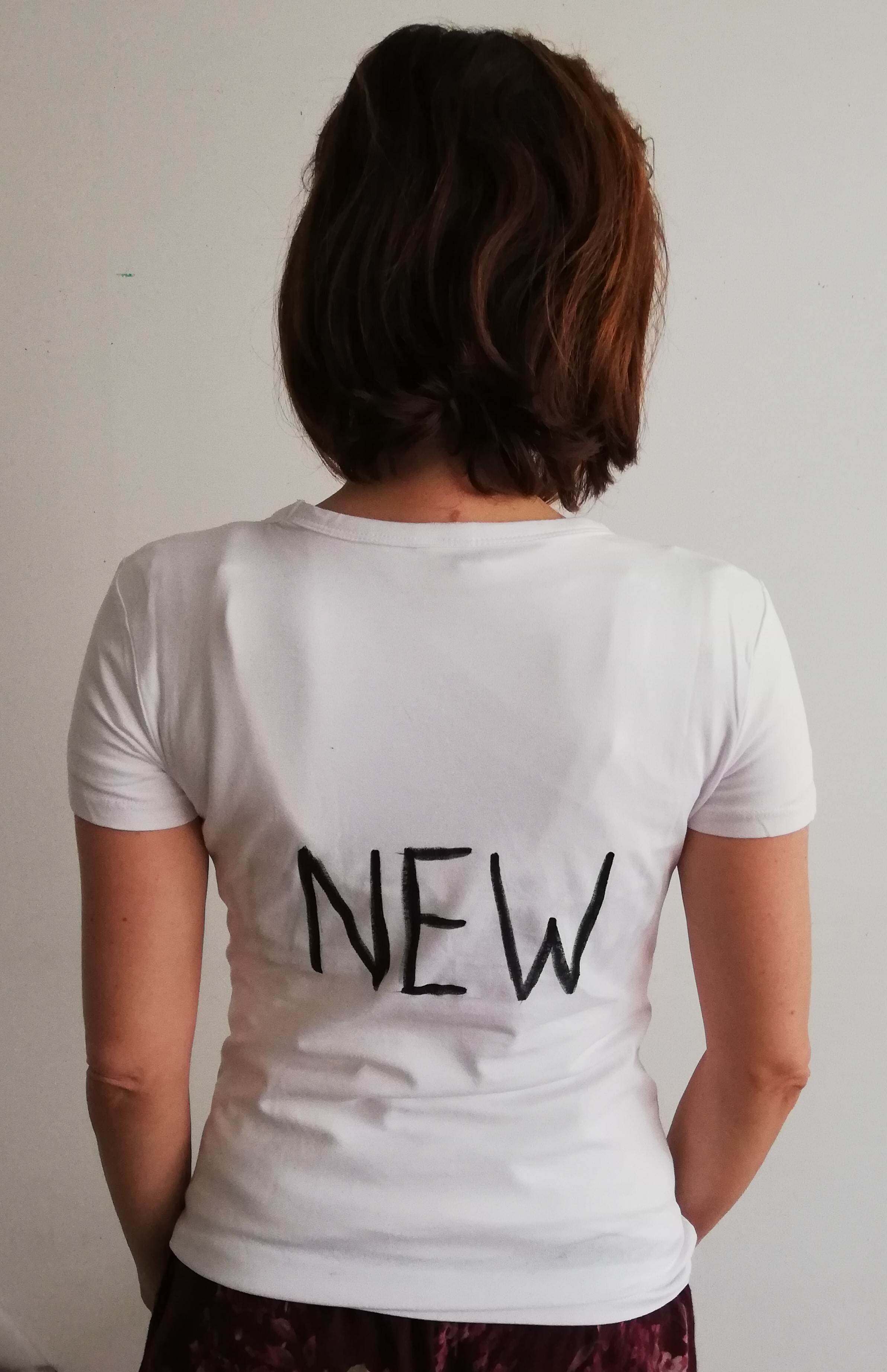
Food Messages, video, 2019.
The second part of the project focuses on specific issues about what we called ‘comfort food’. I’ve developed this part of the project in the shape of one series of drawings called Candy Day and two video art works. In the first video I talk about the number of contradictory messages we get everyday about food, that conforms an explosive cocktail for our minds, mixing eating, feelings, health care, desires, and so on. The second video is still being produced, and it focuses on emotional eating and food memories.
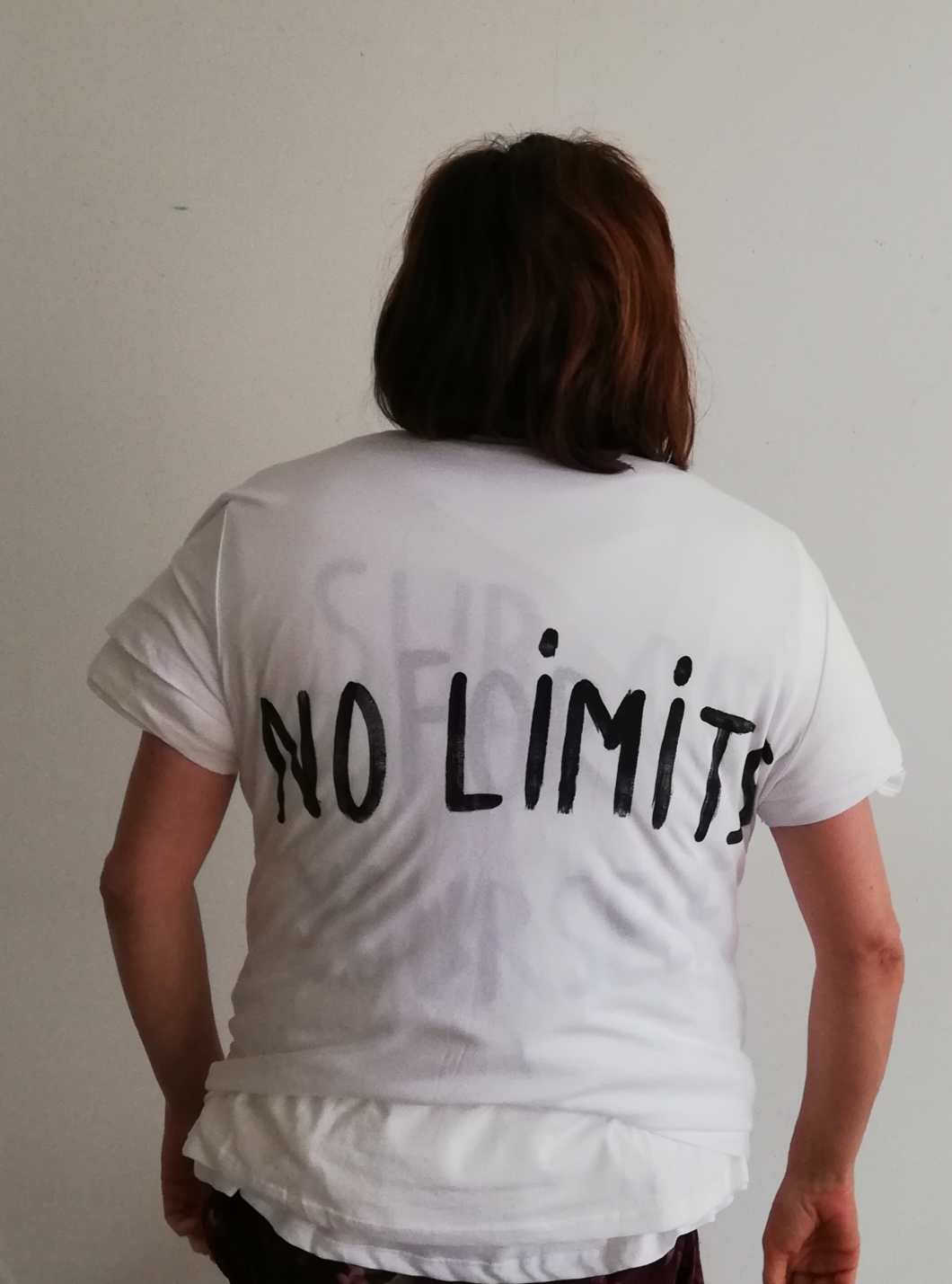
Food Messages, video, 2019.
Read more:
